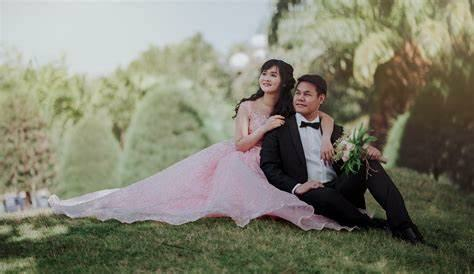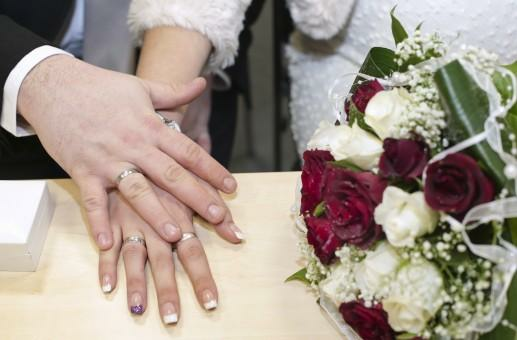WRITING A WEDDING SCRIPT
Part 1: The Nuts, Bolts, Ball & Chain

While most of the blogs on this site are written for marrying couples and prospective celebrants, a recent in-house survey showed that one of the main things that new (and even experienced,) celebrants struggle with is writing scripts. So, let’s talk about that. This one is for the celebrants and soon-to-be celebrants.
If you’re reading this as a marrying couple, this blog article will give you some ideas of what to expect and what to speak to your celebrant about.
There are many aspects to the job of a wedding celebrant. One of the important tasks that can be enjoyable but may not come naturally to some, is writing a ceremony script. You can call it one big script broken up by ceremonial action, musical items, poetry readings etc. or lots of little scripts. It really doesn’t matter how you see it.
Let’s start with answering the question, “what does a marriage celebrant actually say at a wedding?”
It is different for different people. It depends on the couple of course. Do they want an elegant speech laced with poetic language? Do they want something short, sharp, and funny? Do they want their story told?
Does the couple want the celebrant’s script interspliced with speeches, readings, poetry etc. from family and friends?
Does the couple want the script broken up with special ceremonies and rituals such as hand-fasting or candle lighting? If so, there will be particular language that will be appropriate to highlight the symbolism.
Then of course, inarguably the most important part – the pronouncement.
That’s it? It’s done? No, you still have the concluding remarks and the announcement of the two lovebirds as one official couple.
In the next few blog posts, I’ll write out some examples of the above scripts, but I want to start with a few tips that can help you to get into the right headspace and get your mental cogs turning in the right direction. Some celebrants might consider the whole ceremony as one big script and some as a few smaller scripts linked together. It really doesn’t matter how you visualise it. For the sake of this blog we’ll consider them as individual scripts.

TIPS FOR WRITING WEDDING SCRIPTS
- Meet the couple. That sounds obvious because it is obvious but to truly give your couple a unique experience, you have to know them and what makes them different to the last couple you married. Almost nobody wants a cookie cutter wedding ceremony.
- Find out from the couple what they want included. Beyond the officiation there is room to move with rituals, readings, musical items and more. This is when you calculate how long the ceremony will be which will help you to time your speaking moments.
- Before writing, plan the ceremony’s structure including timing of the different inclusions from procession to recession. Getting a feeling for the ceremony’s flow will help you to get into your own writing groove. It will also help you to map out where your speaking moments will be included.
Make it a visual map. Place your speaking moments within that map. It could be something as simple as this, where I’ve highlighted the celebrant’s main speaking moments where a script is needed. There will be other one or two liners spoken throughout such as “All rise” “You may now be seated” etc. Other moments such as exchanging of the rings and the pronouncement will of course require you to speak but can be written in as simple prompts. The highlighted moments are where you’ll need a script that likely will include more than 1 or 2 sentences.
Guests Arrive
Housekeeping
Processional (or Bridal March)
Welcoming & Giving Away
Candle Lighting Ritual
Introduction
Reading (Uncle Bob)
Monitum
The Asking
Legal Vows
Personal Vows
Ring exchange
The Pronouncing
Signing of the Register
Conclusion
Summing up or Blessing
Congratulations and Presentation
Recessional
- Start with the personal stuff such as the couple’s background. What is their story? Write it all down and don’t worry too much about where or how it all fits. At this stage it’s about writing more than you’ll likely use. You’ll be culling words and “sharpening up” the scripts later.
- Going on from the last tip, don’t worry too much about ultra-specific stuff like commas in the right place, the right adjective to use etc. Don’t edit as you go unless that comes naturally to you, and you can maintain momentum while doing so. Just let it flow. You’ll be going back over it and will have your chance to edit and fix up mistakes. Avoid getting bogged down.
- Now you’ve got your couple’s story. Now you’ve got the mapping of the ceremony it’s time to start scriptwriting.
- Once you’ve got a script for each section, put them all together in the one document.
- Read over each script with a scrutineering, editing eye. This includes reading them out loud and even recording yourself so that you can hear them back to see how they flow. Make changes as necessary. Then give it to another trusted reader to give it their once over.

I’ll be back with script examples but in the meantime, get practising.
If you’re reading this as someone who is interested in becoming a qualified marriage celebrant, talk to us here at Rose Training Australia. We qualify more students with the CHC41015 – Certificate IV in Celebrancy than any other registered training organisation.
